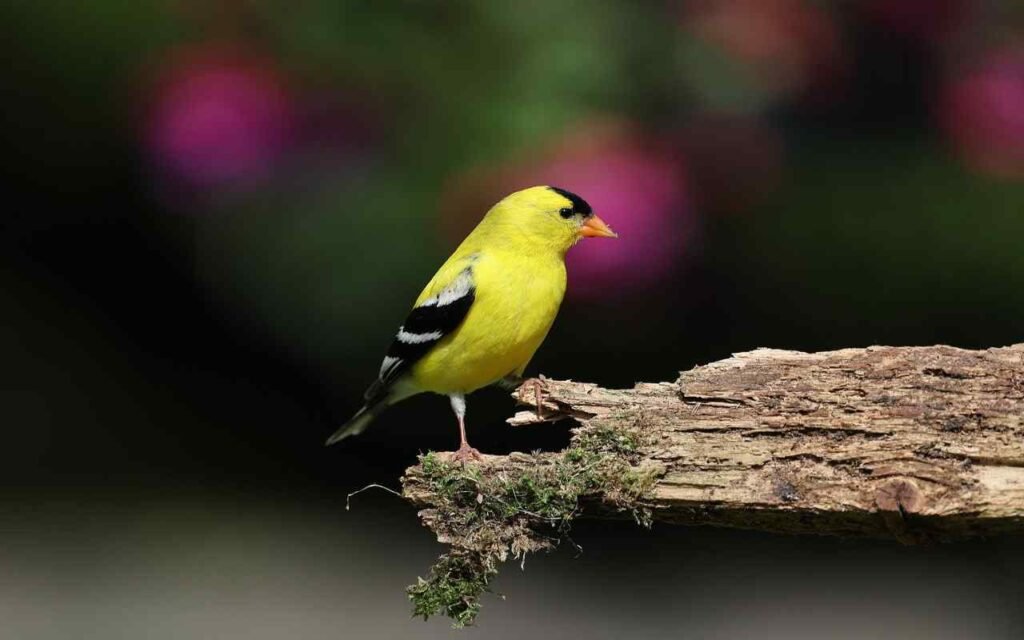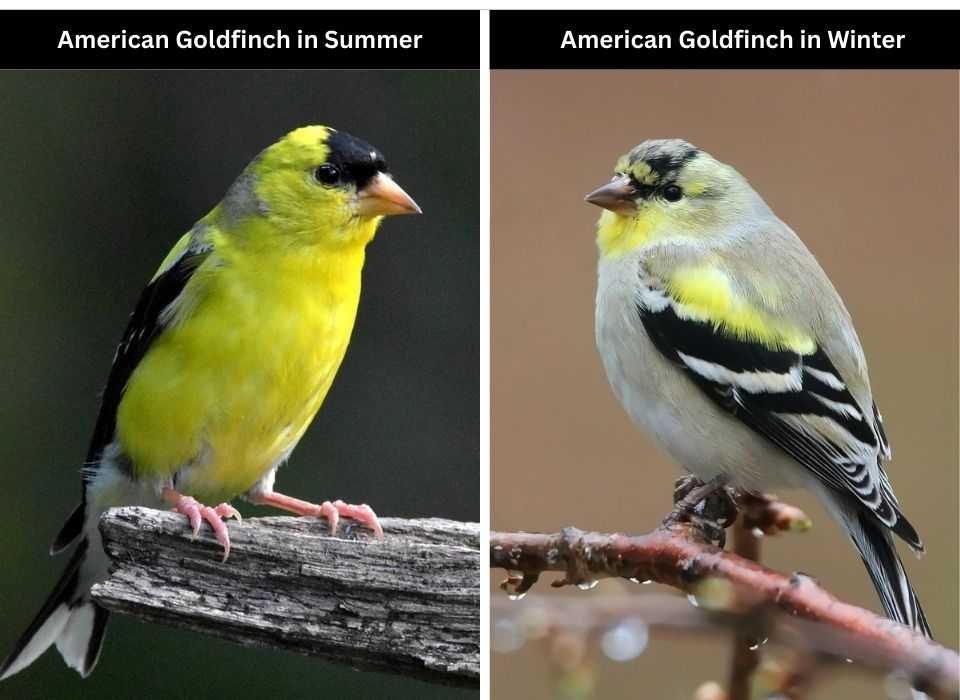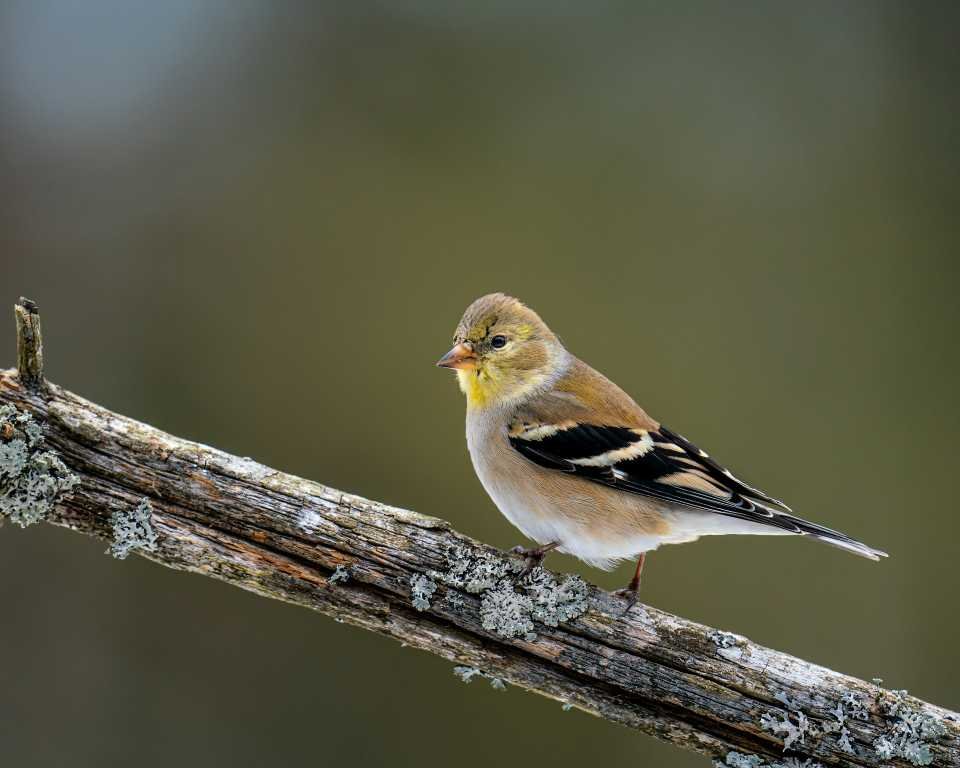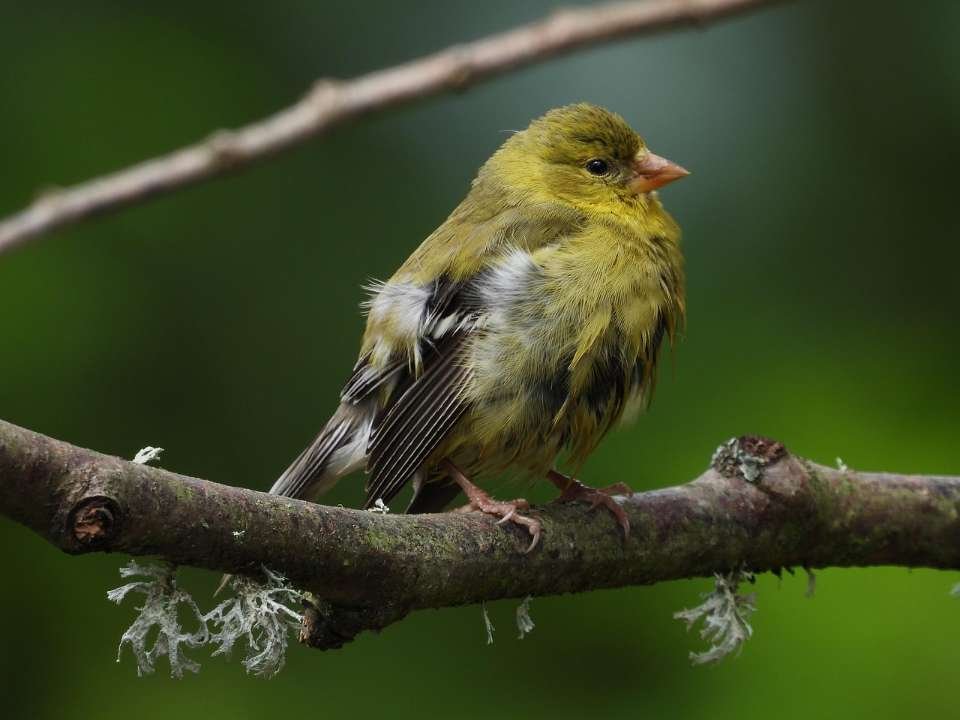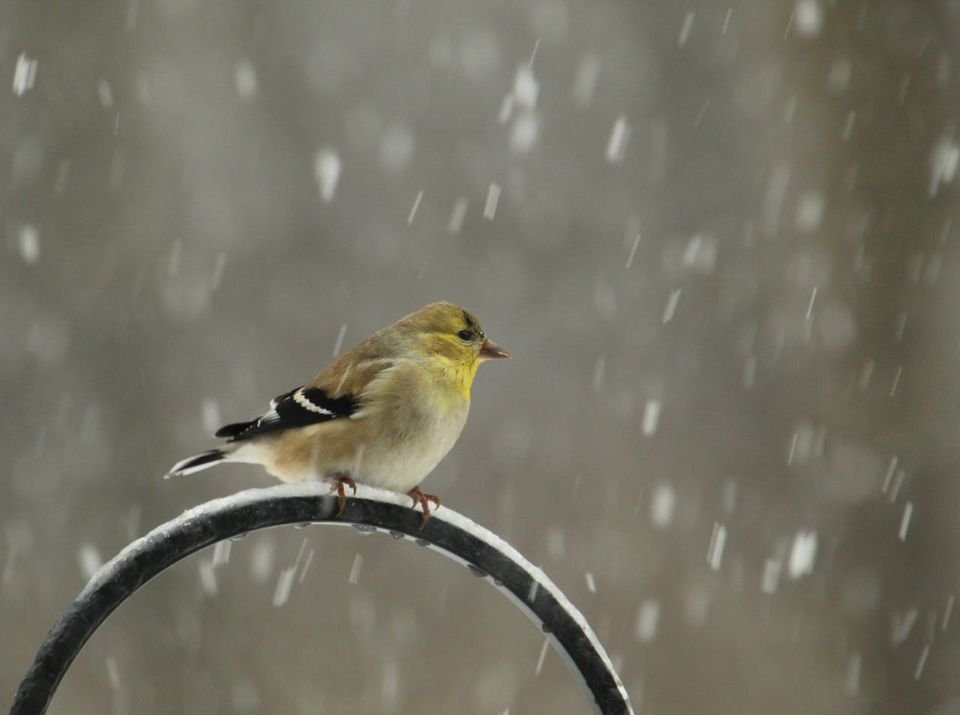If you’ve ever watched a goldfinch at your feeder in the middle of summer and then spotted that “same” bird in winter, you probably thought, “Wait a second… what happened to you, buddy? 😲” One month it’s a bright, glowing yellow like a neon highlighter, and the next it looks like it just rolled around in a pile of oatmeal.
So why do goldfinches change color? Short answer: it’s all about survival, attracting a mate, and some pretty impressive bird biology.
This whole topic grabbed me the first time I realized that the “dull little bird” in my yard during January was the exact same species as the bright yellow finch I photographed in June. Honestly, it blew my mind. So let’s dig into what’s really going on here and why goldfinches flip their look like they’re auditioning for a makeover show.
Goldfinch Colors: The Quick Version
Before we go full bird-nerd, here’s the fast breakdown.
- Male American goldfinches turn bright yellow in summer to impress the ladies during breeding season.
- In fall and winter, they molt into a drabber olive-brown plumage for camouflage.
- Females stay more muted year-round, but also shift shades slightly.
- It’s not just random, it’s tied to hormones, feather structure, and seasonal survival strategies.
But if you’re like me and want the whole story (and maybe a few sarcastic side comments), keep reading.
The Science Behind the Color Change
So what’s actually happening on a biological level?
Goldfinches don’t just fade like your favorite old t-shirt. They molt, meaning they shed old feathers and grow new ones. This usually happens twice a year.
- Spring molt: Males grow new feathers rich in carotenoids (yep, the same plant pigments in carrots) that make them that famous canary-yellow.
- Fall molt: They swap those flashy feathers for duller olive and tan ones.
Why carotenoids? Because goldfinches don’t make their own yellow pigment. They get it from seeds, especially plants like sunflowers, dandelions, and thistles. If you’ve ever seen them raid your sunflower heads, now you know, they’re literally eating their wardrobe.
Key takeaway: Goldfinch color isn’t just about looks, it’s about diet, timing, and survival.
Why Bright Yellow in Summer?
Okay, so why bother glowing like a lemon drop in July? Simple: mating season.
Males use their flashy feathers as a billboard that screams, “I’m healthy, I eat well, and I’d make a great dad.” Female goldfinches pay attention to that. A brighter yellow male is usually stronger and has better access to food.
It’s bird Tinder. The brighter the yellow, the more likely he’s going to get “swiped right.”
Also, during summer, the trees and shrubs are thick with green leaves. That bright yellow actually helps them blend in better than you’d think. Against sunlit leaves, they don’t stand out nearly as much as they do in, say, January.
Why Dull Olive in Winter?
Now let’s flip the script. When winter rolls around, that same highlighter-yellow would basically make them a flying bullseye for predators. Hawks would have an all-you-can-eat buffet.
So the dull olive-brown is camouflage. Against bare branches, dried grass, and snow, the muted colors make them harder to spot. Plus, no one’s looking for a mate in February. Why waste energy on being flashy when food is scarce and survival is priority number one?
IMO, it’s like trading your party outfit for sweatpants in winter. Totally practical.
Do Female Goldfinches Change Color Too?
Yes, but not as dramatically. Females stay more muted year-round. They’re more olive-green in summer and a bit browner in winter. Still, they do molt, and you can notice subtle shifts if you pay attention.
Here’s the thing: female birds don’t need to attract mates with neon feathers. Their main advantage is blending in while nesting. Bright yellow females sitting on eggs would basically be screaming, “Here’s lunch!” to predators.
So while the males play peacocks, the females stay practical. Honestly, smart move.
Fun Fact: Goldfinch Babies Look Totally Different
Ever seen a young goldfinch? They look nothing like the bright yellow adults. Juveniles are mostly brownish with hints of yellow. This gives them better camouflage when they’re still figuring out how to fly without slamming into every branch.
By their first spring, they start the same molting process as the adults. So if you see a scruffy, awkward-looking goldfinch around late summer, don’t panic, it’s just a teenager in the middle of its “awkward phase.” We’ve all been there.
What Triggers the Color Change?
This part’s fascinating. Goldfinches don’t just wake up one morning and decide to swap outfits. Their bodies respond to day length (photoperiod) and hormones.
- As days get longer in spring, hormone levels change, triggering the molt into brighter plumage.
- As days shorten in fall, the opposite happens, and the dull feathers come in.
So no, it’s not like they check the calendar and think, “September? Better dull down.” It’s baked into their biology.
Does Diet Affect the Yellow?
Absolutely. Remember those carotenoids from earlier? If a male goldfinch isn’t getting enough of them, his yellow won’t be as vibrant.
Birders have even noticed that males who eat more sunflower, dandelion, or thistle seeds often look brighter. Kind of like how eating junk food makes you feel gross, while a good diet makes you glow.
If you want your backyard goldfinches to look extra snazzy, offer them nyjer seed and black oil sunflower seeds. Not only do they love it, but it helps with their color.
Do Other Finches Change Color Too?
Good question. Yes, but not all of them in the same way.
- House finches: The males stay reddish year-round, though their shade can vary with diet.
- Purple finches: Also hold onto their reddish tones but can fade slightly.
- American goldfinches are unique in how drastically they switch from neon yellow to olive drab.
So if you’re looking at your feeders in winter wondering why your “yellow finch” vanished, it probably didn’t. It just got a seasonal costume change. And if you’ve ever mixed up a house finch with a purple finch, I broke down the differences in this guide.
My Experience Watching Them Change
I’ll never forget the first spring I noticed one scruffy-looking goldfinch, half yellow, half brown. I actually thought it was sick. Turns out, it was mid-molt. Honestly, the in-between look is kind of hilarious, like someone only highlighted half their hair.
Now I actually look forward to that messy transition period because it’s proof the seasons are shifting. One of those little signs of nature’s clock ticking along.
How to Tell a Winter Goldfinch from Other Birds
Here’s a common problem: people see a dull, olive-brown bird in winter and think, “Where did my goldfinches go?” Truth is, they’re still there, just blending in.
Winter goldfinch ID tips:
- Still has black wings with white wing bars.
- Smaller, compact size compared to sparrows.
- Thicker finch beak (great for cracking seeds).
So even without the neon yellow, they’re pretty easy to recognize once you know what to look for.
Do Goldfinches Ever Stay Yellow Year-Round?
Not in the wild. In captivity, if they get artificial lighting and steady access to carotenoid-rich foods, their feathers may stay brighter longer. But in nature, the molt is inevitable. It’s a built-in seasonal rhythm.
So if you’re in Florida in January and you see a dull goldfinch, don’t blame the sunshine. They’re still rocking the winter wardrobe.
Why Does This Fascinate Us So Much?
Because honestly, not many backyard birds pull such a dramatic color switch. Cardinals stay red, blue jays stay blue, chickadees stay chickadees. But goldfinches? They reinvent themselves twice a year.
It’s like nature giving us a live demonstration of how animals adapt to survive. Also, admit it, it’s just fun to watch your feeders turn from a dull crowd in winter to a carnival of color in summer.
Key Takeaways
- Goldfinches change color because of seasonal molts, hormones, and survival needs.
- Males are bright yellow in summer to attract mates.
- They turn olive in winter for camouflage.
- Females stay more muted year-round for nesting safety.
- Diet impacts brightness, carotenoids are the secret.
- Day length triggers molts, not the calendar.
Final Thoughts
So, why do goldfinches change color? Because nature’s a genius. They need to be flashy when it helps them find a mate and invisible when predators are circling. It’s a perfect mix of biology, diet, and seasonal timing.
The next time you’re staring at a dull olive bird in January, don’t feel disappointed. Just remember, that same little guy is going to glow like sunshine again in a few months. Honestly, I think of it as nature’s way of reminding us that brighter days always circle back around. 🙂

